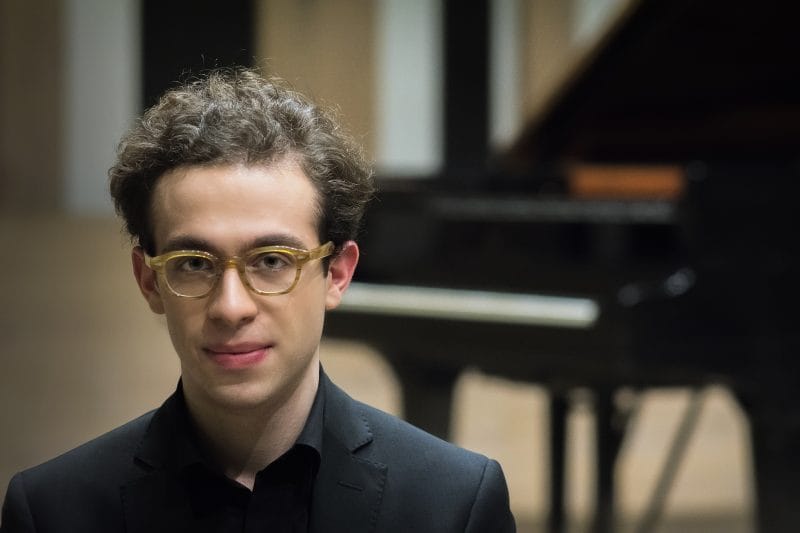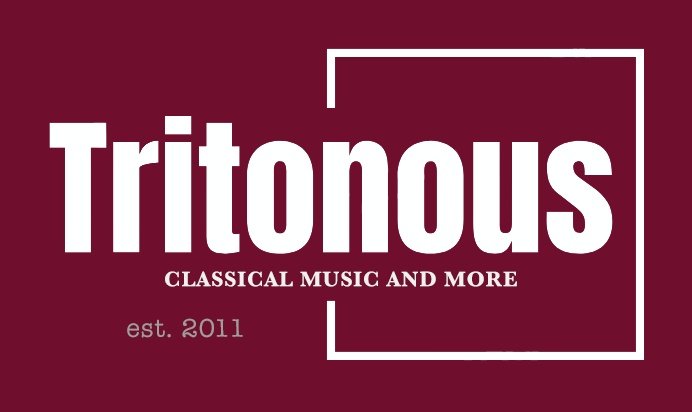
Scriabin, Bach, Beethoven Nicolas Namoradze (piano). Wigmore Hall, 23.06.2025
Scriabin Piano Sonata No. 10, Op. 70 (1912/13)
Bach Prelude & Fugue in E, BWV 878 (WTC II)
Scriabin Fugue in E minor, WoO 20 (1892)
Bach Prelude & Fugue in G sharp minor, BWV 863 (WTC I)
Scriabin Piano Sonata No. 2 in G sharp minor, Op. 19,(1892-7)
Beethoven Piano Sonata No. 29 in B flat, Op. 106, ‘Hammerklavier’ (1818/8)
Prize Laureate of the 2018 Honens Competition and winner of the Critics’ Circle Young Talent award in 2022, Namoradze is a unique pianist. His technique is fearless; and he is a real thinker, not only on music itself but on how performers can be at their best: a series, Mind over Music, is available on the streaming platform iDagio (try this one, An Introduction to Mindful Music. In the UK, we might be most familiar from a Hyperion disc of the music of York Bowen; but it was an unforgettable recital in Gstaad, which included some of his own music alongside Liszt Totentanz, some Bach/Busoni and the Bach First French Suite , that resonates on (see the Gstaad Festival’s page here; my review appeared in International Piano).
Born in Tbilisi, Georgia, in 1992, Namoadze grew up in Hungary before studying at Juilliard and the City University of New York (CUNY). He conjures up whole worlds in his playing, coupled with a sort of Pollini-like integrity and clarity. He certainly gave the opening of Scriabin’s Tenth Sonata all the space it needs, and the volcanic aspect of the music spoke here, for sure. But Scriabin’s trills – no longer an ornament, but electricity generators in and of themselves – seemed to lack some of that vital spark. Against that, there was Namoradze’s iron dynamic control: he can shift from fff to ppp in a heartbeat. He understands how Scriabin’s music works – the return to the opening achieved maximal effect. And there were hints, too, of that terrific technique that was to shine later. If this did not quite live up to the benchmark in this repertoire (Vladimir Sofrontsky), it was mightily impressive.
The Bach E major Prelude and Fugue from the second book of the ‘48’ boasted linear clarity, cadences ‘anchoring’ Bach’s discourse. The fugue was a moment of calm but serious contemplation; Namoadze’s achievement was to let Bach’s counterpoint speak for itself.
The Fugue in E minor, WoO 20 by Scriabin is a curio, a student work (he did study with Taneyev, after all), and by placing it in the middle of two pieces by Bach, Namoradze emphasised its Bachian basis, while Scriabin’s departures into Romantic territory stood out all the more. This was austere, for sure, but peaceful at the same time, its rigour somehow comforting. It is in five voices (there is a four-voice F-Minor Fugue, too, WoO 13, by the way). The other part of the Bach/Scriabin sandwich was the Prelude and Fugue in G sharp minor, BWV 863 (Book I), the Prelude crystal clear, the Fugue with an almost otherworldly aspect to it. Remarkable.
Here are those two Scriabin fugues, played by Valentina Lisitsa:
Finally for the first half, Scriabin’ Second Sonata (the ‘Sonate-Fanaisie’). The last time I heard this piece live was in this very hall in a recital that was sadly a tad disappointing; Namotadze was the polar opposite, keenly attuned to the work’s stormy basis, very strong, ideally focused. He is capable of feather lightness, and his ability to create polar opposites back-to-back was a real asset here. He did not break the tone of the piano in the climaxes, and the projection of melody against post-Chopin tracery was ideally managed. The Presto finale was far more than a whirligig moto perpetuo; although there was no doubting the ‘Presto’ marking here. Every note sounded. This was a demanding first half; far more than a warm-up to the great ’Hammerklavier’.
And when that moment came, we were given a magisterial performance, an absolute masterclass in piano playing. Two caveats: one came right at the opening: the leap was played by the left hand only (as written) but was more of a crotchet than a quaver, thus ‘placing’ the downbeat rather self-consciously; and the trills, as in the Scriabin 10, did not quite reverberate with kinetic energy. But against that, how Namoradze maintained pulse in the development; how Beethoven’s linear workings throughout seemed like an extension of Bach. Because he does not let go of pulse, Namoradze can allow some reverie in, but it never moves outside of the requisite parameters. The Scherzo boasted ultra-dotted rhythms, perhaps a contraction against the first movement’s expansion; but here it was the underlying nervous energy that triumphed. The fantastical was here, too, octave melody against rumbling bass (and yet every note articulated). The Adagio sostenuto was bot an adagio proper and sustained. It is interesting that Namoradze hardly moves when he plays; all the expression goes into the playing, cross-handed moments resulting in rich bass. The slow unfolding was regally managed, but most impressive was how he unapologetically rendered the obsessive moments later in the movement. He let the movement end reverberate on before the magical transition led to an almost impossibly fast and yet perfectly delivered fugue. It felt so fast as to b unsustainable; but somehow, he did. But the tempo, fast though it was, never got faster, resulting in a cumulative momentum over and above the basic tempo. And when those slower moments of counterpoint arrived, we were straight into an invocation of Bach.
A simply superb recital.




